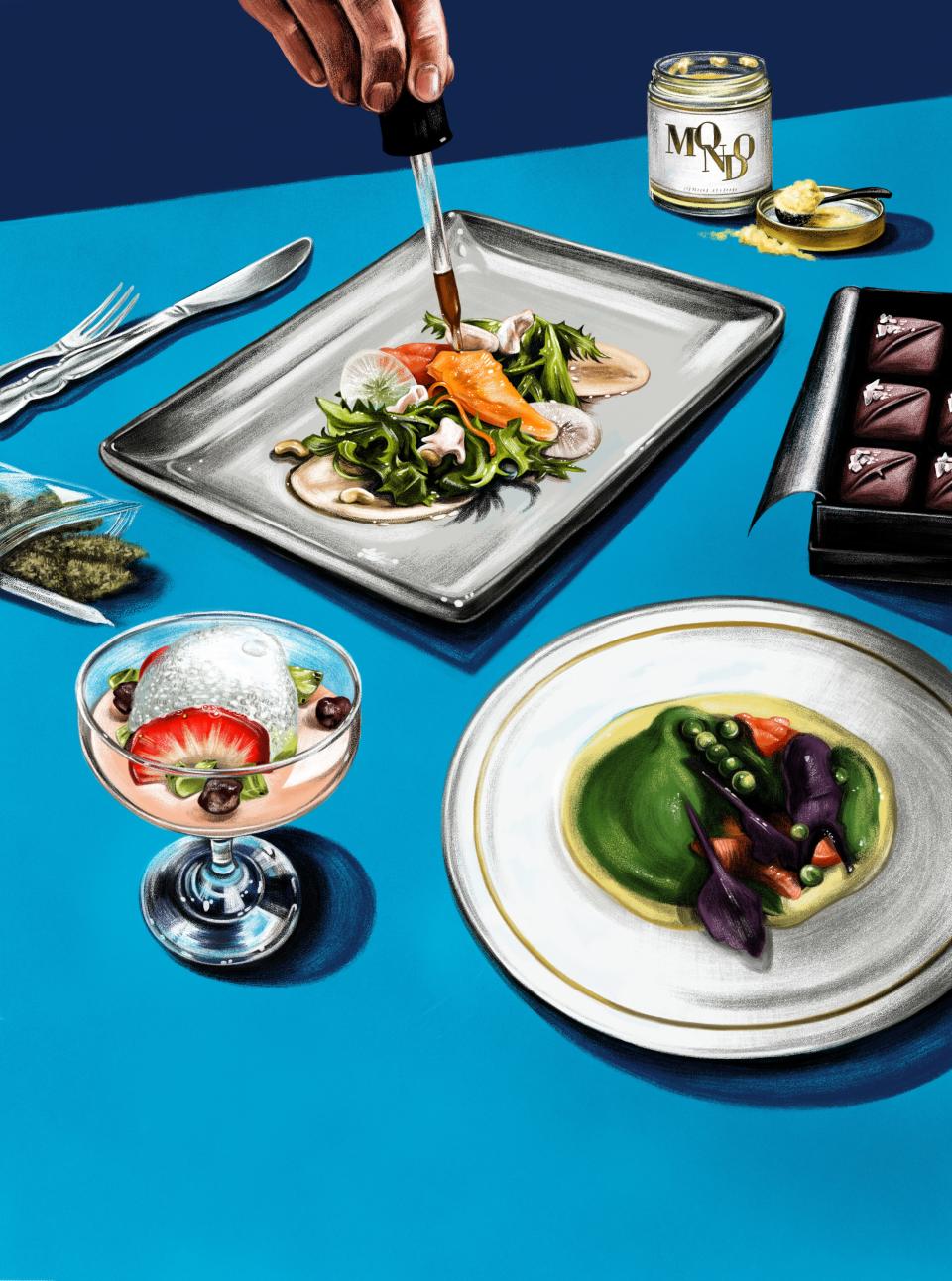Stoner Food Has Gotten Fully Baked
If you've taken two bites of a weed brownie, you know that they can fail in a number of ways: They're dry and crumbly, or flavorless, or stale, or too weak, or (more likely) too strong, maybe so strong that you forget what it feels like to stand up, and you begin to long for a bottle of Sprite as big and welcoming as the Statue of Liberty. The first weed brownie I ever ate was a grave mistake, taken before a New York–to–Boston bus ride that became a study in acute paranoia and the healing properties of a rest-stop McDonald's. Since then I've dabbled in gummies and chocolates, at a mountain weekend here and a trippy art installation there. I made weed oil once, while reviewing a cannabis cookbook for work; it is, admittedly, a convenient and novel ingredient to have (well labeled!) in your fridge. Weed food—brownies, cookies, cakes, candies, and oils—is many things but is almost never delicious.
As legalization slowly spreads across America, though, that's changing. In 420-friendly states, a growing cadre of chefs, confectioners, and entrepreneurs is intent on pulling weed out of its dank past and into our locavore, organic, chef's-menu-laden food present. The goal is no longer to make a cookie so potent it will turn your brain into pommes purée.
In California, where many types of summer produce grow year-round and new strains of weed are hyped as heavily as Supreme drops, the intersection of food and cannabis is at its apex. Casually observing the culinary marijuanaissance from the sidelines as a New York food writer, I'd heard legend of scientifically precise dosages and equally mind-altering flavors; of chocolates and candies—entire meals!—as Insta-worthy as they are mind-altering. I've also wondered, a bit crankily, whether eating cannabis-infused dishes is actually necessary. Given the corny history of weed marketing, could infused food ever reach the level of sophistication of a tasting menu from mastermind chefs like Dominique Crenn and Danny Bowien? And how far have edibles come from crumbly, brain-melting brownies?
So L.A. was where I spent a week in February, eating as much infused food as my body and brain could handle, all in the hope of better understanding where weed and cuisine are coming together right this moment. (Spoiler: I was high for a lot of hours.)
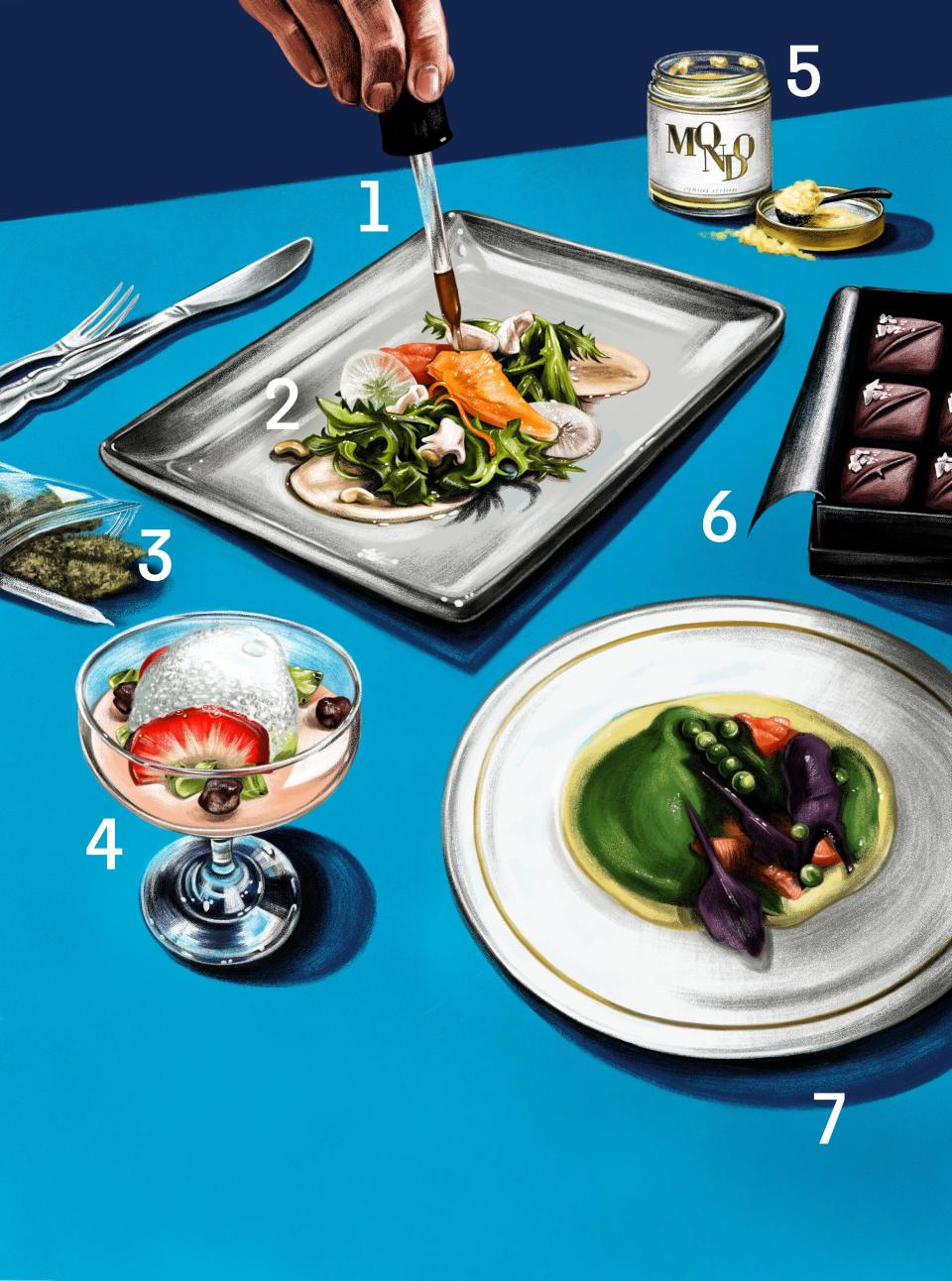
My first dinner in L.A. would come from Luke Reyes, a beefy dude in hip glasses who initially scared the hell out of me when he offered a meal dosed with 40 milligrams of THC. For those curious, this would be enough to convince me that Captain Planet is a historical figure. We agreed on 20 milligrams, the typical dosage for his dinners and a number far less terrifying to me and the slightly wary friend I'd dragged to the dinner. Then we were greeted with oysters and wine and a playlist heavy on Frank Ocean, and we realized we were in good hands.
With the help of a sous-chef, Reyes cooked us seven courses at his apartment in downtown L.A. There can be bundles of red tape with meals like these—less so when they occur on private property—but the majority of people I spoke with in California are banking on full legality in the near future and little pushback now. Those oysters arrived in a perky, salty mignonette of infused citrus vinegar and studded with blips of Cara Cara orange. We ate a 40-day dry-aged New York strip basted with weed butter, whose seared edges smelled like a rich, funky caramel. We ate snap peas—snap peas! in February!—stacked in an artful Jenga tower with citrus segments over a neon green pea-and-cannabis-oil puree. Dessert was a deceptively rich sweet-potato custard with various crunchy doodads on top, plus a pre-rolled joint that Reyes sent me to fetch from under his bathroom sink.
Each dish felt unfussy but modern, the sort of restaurant-esque experience I'd tell my friends to go spend their money on. It felt like the future of…something. “Right now we're not cooking it in a restaurant setting, but it can still be high-end restaurant-quality food,” Reyes told me of his vision for his company, La Hoja. This wasn't a meal that needed weed as a crutch so much as a genuinely delicious dinner that happened to get me stoned. Stoned enough that by the time dessert came, everything felt shinier, each new bite a tiny Christmas-morning surprise.
To get the cannabis into his food, Reyes uses weed butter, infused oil, or distillate (a super-viscous oil that comes in a dropper bottle), all of which are meticulously dosed so he can keep track of how many grams of THC are in each course. Dosage is the biggest hurdle for would-be weed chefs: Regulating the amount of THC—the “brain high” portion of weed, as opposed to CBD's so-called body high, for the non-professional stoners out there—is the difference between happy customers and puking customers. That science largely involves decarboxylation, a delicate process wherein the cannabis flower is heated for a period of time to activate the THC. It can get complicated. Some chefs skip the issue altogether by simply handing you a joint.
One of those is Holden Jagger, a fine-dining-cum-cannabis chef who started serving infused private dinners through his company, Altered Plates, in 2015. Recently he's shifted from infusing food to a pairing model, in which each course is strategically matched with a strain of weed. “It's like showcasing rare or expensive bottles of wine,” he says.
Jagger—an L.A. native and longtime stoner with a perma-tan and hair that implies surfboard ownership—cooked me dinner at his parents' house in Malibu. His food is fully “California” in style: a bowl of homegrown hemp seeds, salt-and-vinegar style, that taste like crunchy popcorn hearts with grassy insides; a plate of braised quail with blood-orange flesh and chicories paired with CBD OG, a strain that tastes like orange Gushers when you smoke it.
But weed with dinner is easy. Weed in dinner is harder. Which may be why THC-powered restaurants aren't yet proliferating across even the 420-friendly states. In New York City, you need to get into an underground supper club like 99th Floor; in L.A., if you're not at a dinner put on by La Hoja or Altered Plates, you might look up Andrea Drummer, one of the only women in L.A.'s infused-dinner cabal, or Aaron Ziegler, a Wolfgang Puck alum who hosts dinners out of his Venice backyard. Or you may find yourself at an event run by Cannabis Supper Club, a one-year-old company that hosts seven-course meals paired with weed from California grower WonderBrett.
I attended a Cannabis Supper Club dinner on a sunny afternoon in a cavernous restaurant in Hollywood, eating with founder Marc Leibel; he spent equal time praising each of the seven courses and discussing the business opportunities that weed dinners present. “Brands are calling me to launch their strains at my dinners,” he said excitedly. He's toeing the line between establishing culinary cred and wringing as much money as possible from a booming market.
Cannabis Supper Club's food aesthetic was extremely “early-aughts tasting menu”: courses that looked like Yayoi Kusama fan art, overly intense flavors, and an actual risotto. It's a trap many weed dinners fall into, using a luxurious but outdated format that feels like a Band-Aid over a mediocre product.
Then came dessert—a coupe glass full of Pepto-pink mango panna cotta garnished with passion-fruit foam, tiny cubes of kiwi and strawberry, and a stoner's fistful of Cocoa Puffs. This was thoughtful and genuinely fun stoner food—the sort of thing cooked up by a talented pastry chef with the munchies. And, days into my quest, it was the first time I'd witnessed weed food actually embrace weed vibes: silly and Technicolor and very chill. After that panna cotta, I walked into the harsh daylight of a Hollywood afternoon, weaved through tourists on the Walk of Fame, and gleefully took too many dumb selfies with the stars on the ground.
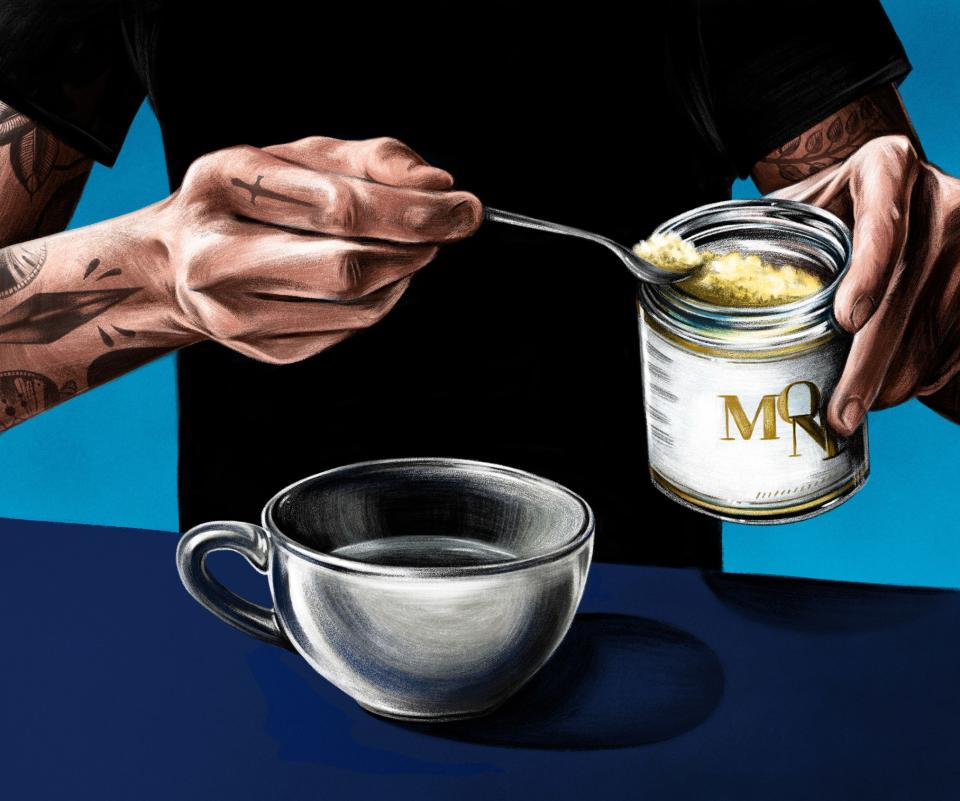
The most famous pot-brownie recipe is not a brownie recipe at all: The confection, called Haschich Fudge and immortalized by Alice B. Toklas in her 1954 cookbook, bears more resemblance to Kind bars, the chewy nut-filled things you buy while desperate at a Hudson News when you're running late for your flight. The recipe doesn't even call for cocoa! But it does call for “canibus sativa” and carries with it a powerful benediction from Toklas, longtime partner of the writer Gertrude Stein: “This is the food of Paradise,” Toklas wrote. “Ecstatic reveries and extensions of one's personality on several simultaneous planes are to be complacently expected.” The woman clearly had either a super-high tolerance or a keen eye for dosing.
Toklas's “brownie” inspired a generation of groovy baked goods, instructions for which filled the pages of many a '70s counterculture cookbook, but weren't very precise. Most recipes left margins of error as wide as a bell-bottom leg. Now, more than 60 years later and 20-odd years since medical marijuana became legal in California, the edibles sector has gone legit. It includes snacks of all shapes, colors, flavors, sizes, and intensities; it's a huge loss for the industry that Skittles had already trademarked “Taste the Rainbow.”
On the L.A. mornings and afternoons when I wasn't staring down an infused meal, I cautiously nibbled through my haul from local dispensaries, seeking out the waviest gems. Squishy raspberry macaroons from Utopia Cannabis that I paired with a long walk that left me stoned in front of a plate of tacos and very happy; a white-chocolate-and-strawberry bar from L.A. company La Familia that tasted like a gourmet version of a Good Humor Strawberry Shortcake ice cream bar, rich enough to convert even the most staunch white-chocolate hater (like me).
And then there was Mondo, a cannabis powder derived from cacao butter and coconut oil that's gunning to become an all-natural Xanax. Whenever I dabbed a little on my tongue using the pre-portioned spoon, it gave me the chill buzz I pray for every time I ingest a marijuana-related product. Mondo is on the forefront of edibles that are expanding beyond their trippy Willy Wonka candy phase and creeping into the pantry, with “clean” snacks and powders, like this one, you might add to a kale smoothie.
But the most delicious edibles I ate in L.A.—ever, really—were from Marigold Sweets, a line of confections made by Vanessa Lavorato, who also co-hosts Viceland's cannabis cooking show, Bong Appétit. Her chocolate-covered caramels, topped with an appropriately precious micro-sprinkle of flaky salt, taste like chewy liquid amber; the toffee is so nutty and rich it conjures a fancy piece of golden brown toast spun into candy. Lavorato uses organic butter and Guittard chocolate, and the finished product comes nestled in a paper jewelry box fancy enough to hold your great-grandmother's engagement ring. Marigold Sweets are sold at only a handful of dispensaries right now but are worth seeking out—and maybe even booking a flight for.
On a hazy Los Angeles morning, I met Lavorato at her Highland Park house. She's been making cannabis-infused chocolates from her kitchen since 2010. As of January 1, though, it's been illegal to sell edibles made in one's home, so Lavorato has temporarily contracted with Indus Holding Company, a manufacturer in Northern California, until she finds a dedicated factory.
“I'm excited to be going into a bigger facility,” she explained, “because I wanted that chew, that creaminess of a caramel” that you can't always achieve when you're working out of your home kitchen.
In Marigold—and in the edibles side of the weed industry as a whole—you can see parallels with the artisanal-chocolate-bar tsunami that started almost a decade ago. Both Lavorato and Varun Mehra, her close friend and business partner, have worked for Alice Waters and the Slow Food organization, which you can see in their dedication to sourcing: “We can't use the word ‘organic’ on the packaging,” Lavorato explains, “but neither of us wants to stand behind a product that isn't the best.”
If you brought a box of Marigold goodies to a dinner party, you'd easily upstage the guy who brought the trendy bottle of natural sparkling wine. Though at 10 milligrams of THC each, the former will mess you up more than a glass of Slovenian rosé. After I ate half a bar of toffee, I lay by a pool for four hours, recovering only after a hamburger and a disco nap. The edible tasted a thousand times more delicious than that brownie on the bus, but they both made me want the same thing: a safe place and comfort food.
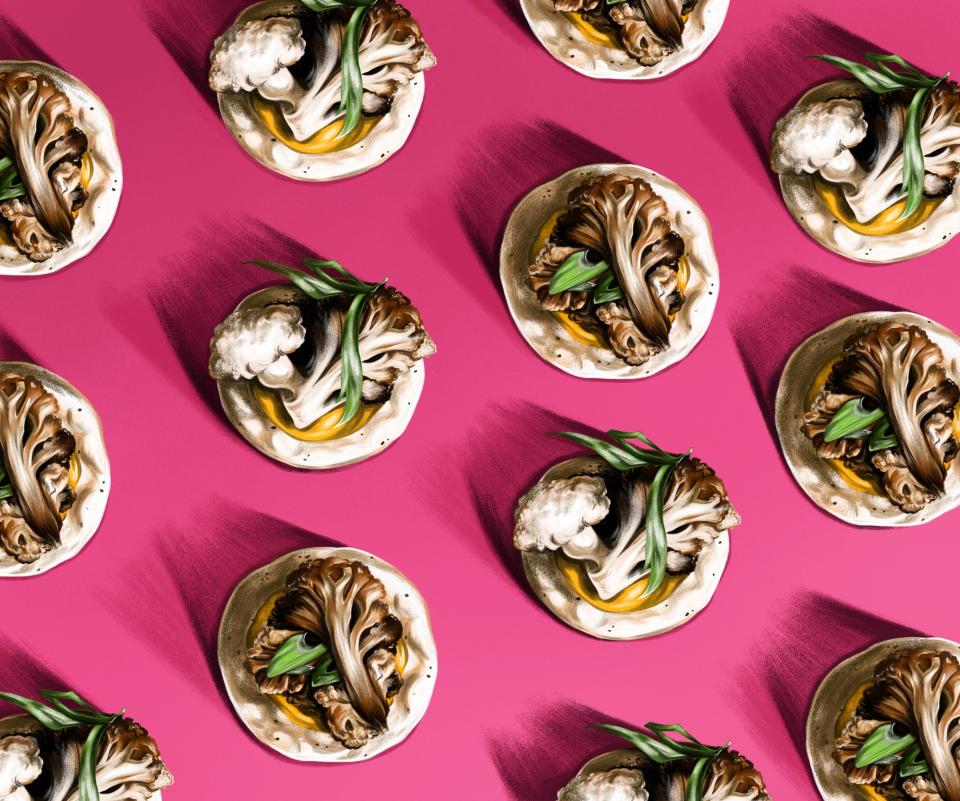
I'm too self-aware to complain about being paid to spend five days in sunny SoCal eating food and being high, but I will say that it got tiring. Every multi-hour infused dinner left me hyper-baked and digging out from under a weed hangover the next day, and even the most thoughtfully crafted edibles seem dosed for weed fanatics who treat a thick blunt the way the rest of us treat our morning cup of coffee.
Chris Sayegh, an L.A. chef who has been cooking infused dinners as the Herbal Chef since 2014, has taken my woes into consideration. I met Sayegh at his home, also in Highland Park, where he cooked me squid-ink pasta with lobster (a tangle of mushy noodles flecked with bits of lobster so dried out they'd give a Mainer a stroke, to be honest) and told me about his plans for a weed-themed restaurant. He's applied for one of the licenses that West Hollywood will issue in 2018 for “cannabis-consumption areas,” lounges where it'll be legal to smoke or eat edibles. (Luke Reyes of La Hoja is also gunning for one of these slots.)
His vision is a stoner Disney World for adults: After diners make a reservation, they'll fill out a questionnaire—how high do you want to get? want the package that includes an Uber home? how many courses are you up for?—and Sayegh's team will meticulously plan the meal. There will be servers with dessert carts, only instead of dessert they're carrying various strains of weed you can smoke.
While I very much appreciate the TLC that Sayegh hopes to bring to THC-laced dinners, it all skews a little too kitschy for me—like a Señor Frog's, only you're getting infused filet mignon instead of a Tequila BBQ Burger. I imagine a lot of tourists and bachelorette parties, and the food will be less important than the Instagram. I'm sure I'll go at least once.
Up till now, the most memorable experience was the dinner served by Luke Reyes, but it was merely very delicious, not revelatory. The most thrilling stop on my California weed journey would take place in New York. And it didn't really involve weed. In Manhattan, Lalito chef Gerardo Gonzalez served me the wildest soup I've ever tasted. It started as a broth of charred onion, tomato, shishito peppers, and garlic, plus water that dried hominy had been soaked in, which is like a fresh tortilla in liquid form. Into the soup went the soaked and cooked hominy, grilled okra, pickled rhizomes (think ginger, but funkier), epazote (an herb that lands somewhere between mint and anise), charred chayote (a wrinkly, grassy-tasting gourd), and a tincture of CBD, a non-psychoactive cannabinoid. It's zingy and earthy and tastes like something you'd be served if you got sick in a magical forest.
This is weed not only as a toy but as a whole new flavor to play with. “I naturally like exploring taste beyond the cultural palette that people are used to, and get really excited by pungent, ‘dirty,’ bitter flavors that could all be described as dank,” Gonzalez explained when I first asked him about CBD. “Maybe that's the new umami?” He'd developed the soup recipe for a recent dinner he'd cooked, co-hosted by the new 420-friendly publication Gossamer.
This CBD cuisine of Gonzalez's takes up its own proprietary chunk of the stoner-food spectrum: It's inventive and imparts a different, gentle buzz without steamrolling your day the way a mis-dosed hit of THC can. “THC to me seems a little bit hokey, 'cause it's this ‘Oh, we're getting high!’ kinda thing,” Gonzalez tells me. You could eat that soup once a week, not once every six months. He was considering adding a CBD-infused dish to the Lalito menu—maybe the panna cotta he served at the Gossamer dinner, which involved citrus, tarragon, and CBD-infused tarragon oil. It would have been the perfect addition to a dessert cart, but Gonzalez has since decided against it.
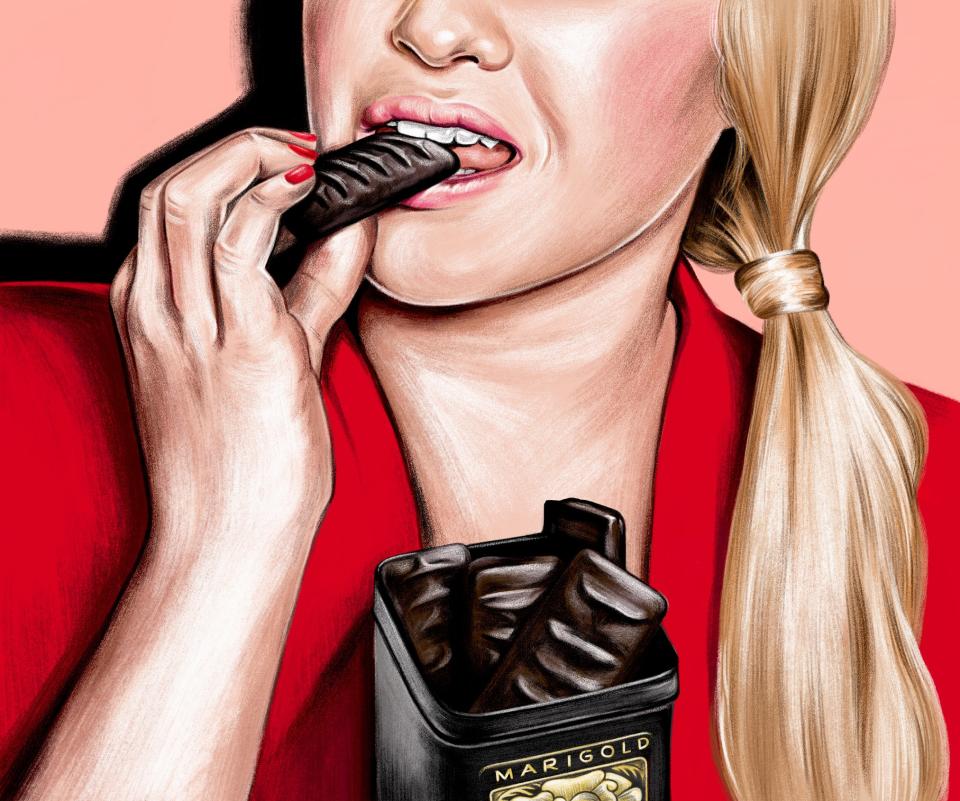
Can I be honest? Really, the best meal I had during my quest involved zero cannabis, save for the fact that I was really high when I ate it. At a friend's apartment in Venice, I smoked a bowl and briefly became so stoned that I spent 20 minutes texting people to figure out what dirt is made of. (Mostly decomposed plant matter, bacteria, and silt.) Then I met up with some not-stoned but very understanding friends at the new Night + Market Sahm, the third Los Angeles restaurant from Kris and Sarah Yenbamroong. We ordered too much food out of sheer enthusiasm, and it felt like an embarrassment of riches, particularly to my giggly and ravenous self.
I downed bite-size pieces of salty, fatty pig neck dipped in a funky-tart chili sauce, drunken noodles with pastrami, a brilliant coconut-infused sweet-potato curry, and Kris's famous fried-chicken sandwich festooned with both ranch dressing and Thai papaya salad, which I somehow sliced into perfect quarters. There was sticky rice to sop up sauce and fizzy natural wine to tamp down spice; this, I realized, was the weed-powered culinary experience I sought. That “food of Paradise” that stoner laureate Toklas so poetically described.
The infused dinners I'd eaten were exciting conceptually; it's thrilling to watch chefs wade into culinary waters that are legitimately new. I'd happily do it again to celebrate a moment: a birthday, a raise, a friend's divorce—particularly once these chefs better define their own unique strain of weed cuisine. After a week of weed dinners and lunches and infused sodas and six flavors of pot chocolate bars, I feel safe in predicting that cannabis cuisine will stay at the fringe of the culinary Zeitgeist, something that chefs will dabble in when they're looking for a creative challenge or money. And edibles will continue to get more delicious; I can imagine someday ordering movie-theater popcorn spiked with THC. Every film's Rotten Tomatoes score will skyrocket.
But nothing out there right now matches the feeling of leaving a big dinner giddy and stoned, the way I left Night + Market, waving goodbye to the fish tanks as we passed back through beaded curtains into a perfectly ordinary Los Angeles night.
Marian Bull is GQ's Travel & Eats editor.
This story originally appeared in the June 2018 issue with the title "Stoner Food Gets Fully Baked."
